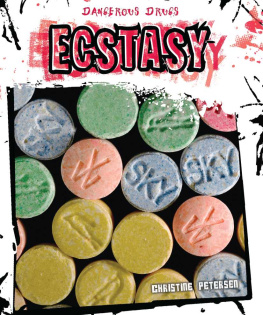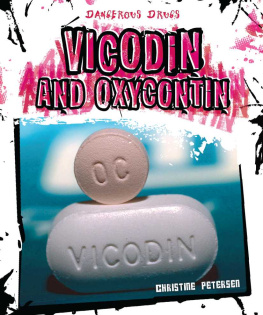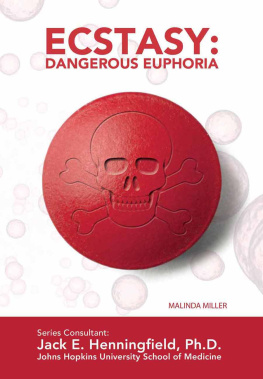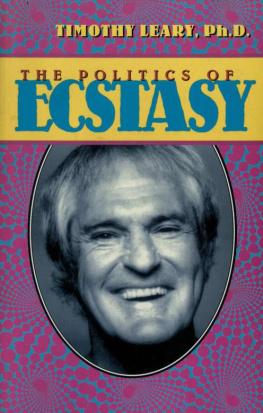Published in 201 by Cavendish Square Publishing, LLC 303 Park Avenue South, Suite 1247 New York, 10010
Copyright2014 by Cavendish Square Publishing, LLC
First Edition
No part of this publication may be reproduced, stored in a retrieval system, or transmitted in any form or by any meanselectronic, mechanical, photocopying, recording, or otherwisewithout the prior permission of the copyright owner. Request for permission should be addressed to Permissions, Cavendish Square Publishing, 303 Park Avenue South, Suite 1247, New York, NY 10010. Tel (877) 980-4450; fax (877) 980-4454.
Website: cavendishsq.com
This publication represents the opinions and views of the author based on his or her personal experience, knowledge, and research. The information in this book serves as a general guide only. The author and publisher have used their best efforts in preparing this book and disclaim liability rising directly or indirectly from the use and application of this book.
CPSIA Compliance Information: Batch #WW14CSQ
All websites were available and accurate when this book was sent to press.
Library of Congress Cataloging-in-Publication Data
Petersen, Christine.
Ecstasy / by Christine Petersen. p. cm. (Dangerous drugs)
Includes index.
ISBN 978-1-62712-375-4 (hardcover) ISBN 978-1-62712-376-1(paperback)
ISBN 978-1-62712-377-8 (ebook)
1. Ecstasy (Drug) Juvenile literature. 2. Drug abuse Juvenile literature. I. Petersen, Christine. II.
Title.
RM666.M35 P48 2014 615.7883dc23
EDITORIAL DIRECTOR: Dean Miller
SENIOR EDITOR: Peter Mavrikis
SERIES DESIGNER: Kristen Branch
Photo research by Kristen Branch
The photographs in this book are used by permission and through the courtesy of: Cover photo by SuperStock; SuperStock, 1; Exactostock/Superstock, 4; mediacolors/Alamy, ; FDA/Alamy, 10; Angela Hampton Picture Library/Alamy, 12; David Hoffman Photo Library/Alamy, 15; BSIP SA/ Alamy, 18; fStop Images/the Agency Collection/Getty Images, 22; Everynight Images/Alamy, 26; Image Source/Superstock, 29; Michelle Del Guercio/Photo Researchers/Getty Images, 32; Jake Lyell/ Alamy, 33; AF archive/Alamy, 35; BSIP/Superstock, 40; Steve Debenport/E+/Getty Images, 42; iStock.com/Simmisimons, 43; Danita Delimont/Alamy, 45; Noel Hendrickson/Blend Images/Getty Images, 46; iStockphoto.com/DenGuy, 48; Golden Pixels LLC/Alamy, 50; MIXA/Getty Images, 52; SW productions/Photodisc/Getty Images, 54.
Printed in the United States of America


Left: When used to describe an emotion, the word "ecstasy" is often associated with a strong feeling of joy or delight.
H AVE YOU EVER EXPERIENCED A MOMENT of happiness so perfect that it filled your heart? Perhaps that feeling struck you after meeting a special person or achieving a long sought-after goal. Then again, it might have bubbled up at the most ordinary of moments: while laughing with family at the dinner table, hanging out with friends, or taking a walk in the park. This joyful emotion is also known as ecstasy.
Humans want to feel happy, especially in the company of other people. But like all emotions, ecstasy happens only when the circumstances are perfect. It cant be planned or faked. Perhaps thats why drugs like MDMA (methylenedioxymethamphetamine) have become so popular. MDMA creates feelings that mimic (joy) or empathy (understanding of others feelings). Thats how this drug earned its nickname: Ecstasy. But MDMA does not only affect mood. It can make shy people feel self-confident, or provide a burst of energy that lasts for several hours. MDMA also enhances the senses by making lights, sounds, and touch more intense. Those tempting side effects make Ecstasy sound harmless. But the truth is far more complicated.
HISTORY OF THE HUG DRUG
In 1912, scientists at Merck Pharmaceuticals were working overtime. Their competitor, Bayer, had a product that could control abnormal bleeding. Merck wanted to develop a similar drug that would be less expensive. Synthesis (manufacturing) of this drug required several steps. MDMA was produced during one stage of the synthesis. At the time, MDMA wasnt considered a drug (a substance that changes how the body or brain functions). Instead, it was tucked away on a shelf among other unused chemicals and all but forgotten.
The real story of MDMA begins in 1965. That year, chemist Alexander Shulgin synthesized MDMA while working for Dow Chemical Company. A few years later, he heard that people were taking it as a drug. Shulgin was curious about its mind-altering effects. He tried MDMA with his wife, Ann. In turn, Ann began giving the drug to patients she treated in therapy. She believed that it helped them to relax and let go of their fear and anger. Within a few years, dozens of therapists nationwide had begun to use the drug in treatment.
By the early 1980s, MDMA had spread from chemistry labs and therapy offices to dance clubs and raves . Young people called it Ecstasy, and deejays created a whole new style of music to play while dancers rolled under its influence. Before long, college students were familiar with this drug, too. They knew what to expect as it took effect. A restless feeling was common, along with sweatiness and a dry mouth. Users might notice an increased heart rate, as if they had just been startled. People would sometimes grind their teeth or clench their jaws tightly. Others experienced chills, nausea, or headaches.

Ecstasy is a potent drug that first became popular in nightclubs, raves, and dance parties. Known as a "club drug," many users believe that Ecstasy enhances their nightlife experience with feelings of increased alertness and a strong sense of well-being.
Users were strangely willing to endure these symptoms along with Ecstasys more desirable side effects. But health professionals were concerned. As the drug became more widespread, so were its adverse reactions . Hospitals admitted people who became ill after a single dose. They saw others who collapsed despite previously using the drug without problems. These patients suffered a frightening range of symptoms, such as severe dehydration, high body temperatures, and swelling of the brain. Some experienced seizures or kidney failure, and a few fell into comas. Medical researchers began to study the effects of MDMA on animals. They found that the drug damages nerve cells in the brain, perhaps permanently.
Meanwhile, law enforcement officials noticed an increase in the trafficking (illegal sales) of Ecstasy. Drug sales between the United States and other countries were on the rise. The US Drug Enforcement Agency (DEA) decided it was time to take action. Up to this point, MDMA had been legal. But in 1985, the DEA used a law called the Controlled Substances Act to ban the drug. It was now a felony to use, buy, or produce MDMA in the United States.
MONITORING ECSTASY

















